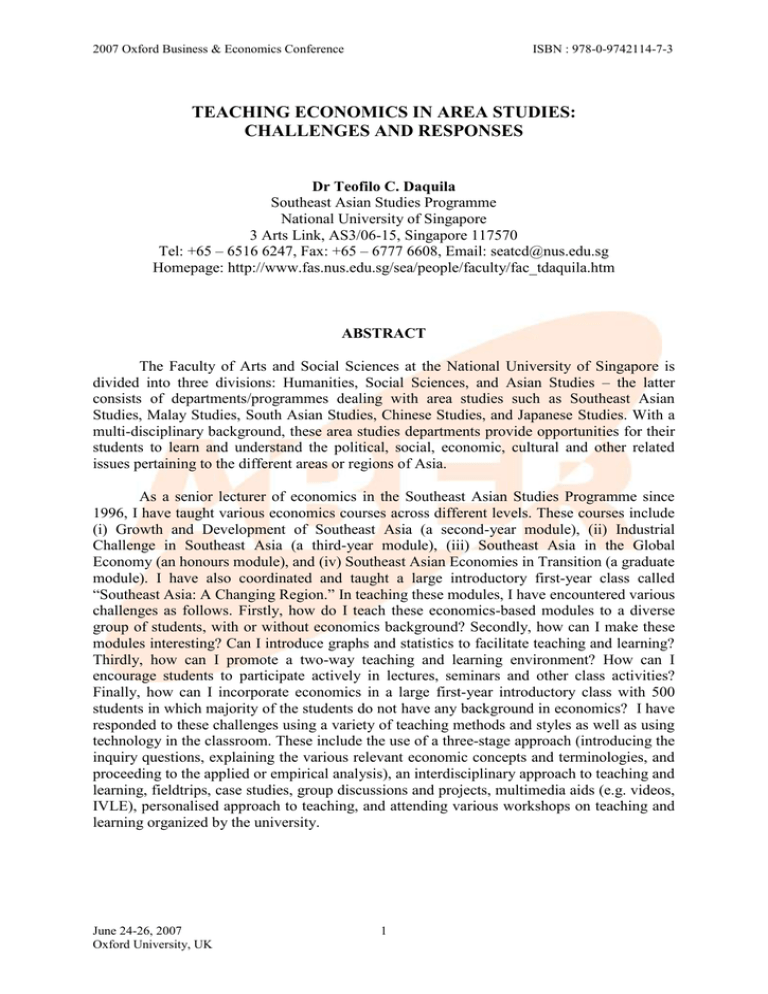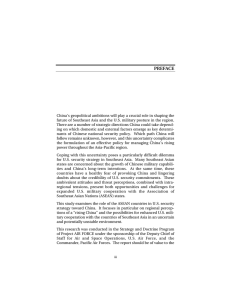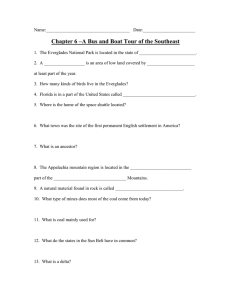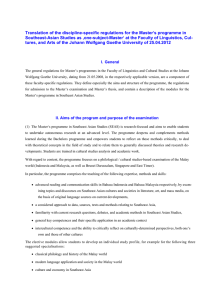Teaching Economics In Area Studies: Challenges And Responses
advertisement

2007 Oxford Business & Economics Conference ISBN : 978-0-9742114-7-3 TEACHING ECONOMICS IN AREA STUDIES: CHALLENGES AND RESPONSES Dr Teofilo C. Daquila Southeast Asian Studies Programme National University of Singapore 3 Arts Link, AS3/06-15, Singapore 117570 Tel: +65 – 6516 6247, Fax: +65 – 6777 6608, Email: seatcd@nus.edu.sg Homepage: http://www.fas.nus.edu.sg/sea/people/faculty/fac_tdaquila.htm ABSTRACT The Faculty of Arts and Social Sciences at the National University of Singapore is divided into three divisions: Humanities, Social Sciences, and Asian Studies – the latter consists of departments/programmes dealing with area studies such as Southeast Asian Studies, Malay Studies, South Asian Studies, Chinese Studies, and Japanese Studies. With a multi-disciplinary background, these area studies departments provide opportunities for their students to learn and understand the political, social, economic, cultural and other related issues pertaining to the different areas or regions of Asia. As a senior lecturer of economics in the Southeast Asian Studies Programme since 1996, I have taught various economics courses across different levels. These courses include (i) Growth and Development of Southeast Asia (a second-year module), (ii) Industrial Challenge in Southeast Asia (a third-year module), (iii) Southeast Asia in the Global Economy (an honours module), and (iv) Southeast Asian Economies in Transition (a graduate module). I have also coordinated and taught a large introductory first-year class called “Southeast Asia: A Changing Region.” In teaching these modules, I have encountered various challenges as follows. Firstly, how do I teach these economics-based modules to a diverse group of students, with or without economics background? Secondly, how can I make these modules interesting? Can I introduce graphs and statistics to facilitate teaching and learning? Thirdly, how can I promote a two-way teaching and learning environment? How can I encourage students to participate actively in lectures, seminars and other class activities? Finally, how can I incorporate economics in a large first-year introductory class with 500 students in which majority of the students do not have any background in economics? I have responded to these challenges using a variety of teaching methods and styles as well as using technology in the classroom. These include the use of a three-stage approach (introducing the inquiry questions, explaining the various relevant economic concepts and terminologies, and proceeding to the applied or empirical analysis), an interdisciplinary approach to teaching and learning, fieldtrips, case studies, group discussions and projects, multimedia aids (e.g. videos, IVLE), personalised approach to teaching, and attending various workshops on teaching and learning organized by the university. June 24-26, 2007 Oxford University, UK 1



